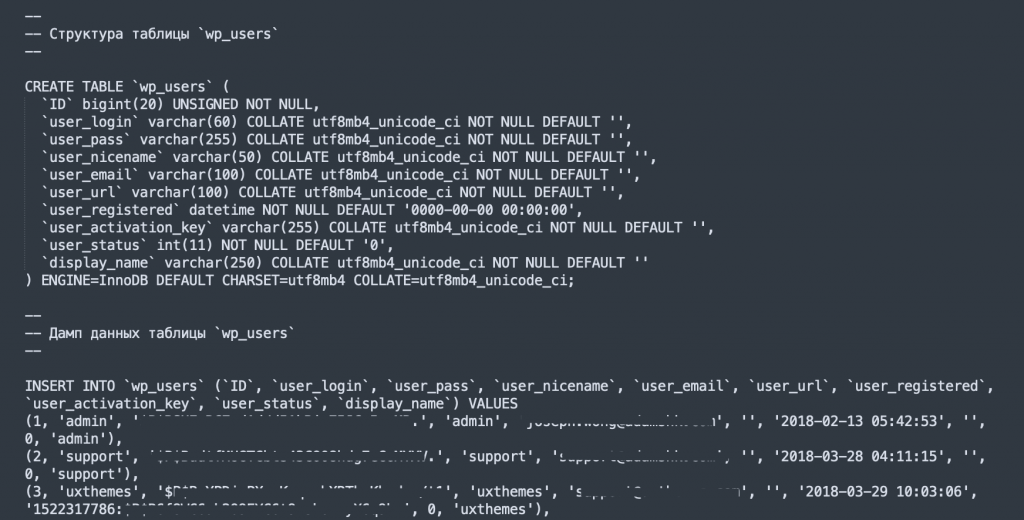AI and Cybersecurity in 2023

In the fast-paced digital age, where threats lurk in the shadows of cyberspace, the importance of robust cybersecurity measures cannot be underestimated. As we look towards the future, one technology stands out as a game-changer in this arena: artificial intelligence (AI). In 2023, AI is set to revolutionize cybersecurity, empowering organizations to stay one step ahead of the ever-evolving threat landscape.
AI and Cybersecurity in 2023
The role of AI in cybersecurity
AI has emerged as a powerful tool in the fight against cybercrime. Its ability to process vast amounts of data and identify patterns makes it an invaluable asset to cybersecurity teams. By leveraging machine learning algorithms, AI can quickly analyze network traffic, user behavior, and system logs to detect potential threats. This real-time analysis enables organizations to respond promptly and proactively to cyber attacks, minimizing the damage caused.
AI can also enhance threat intelligence capabilities by continuously monitoring and analyzing data from various sources, including social media, the dark web, and security blogs. This enables organizations to stay informed about emerging threats and trends, allowing them to adjust their defense strategies accordingly. By leveraging AI, cybersecurity professionals can focus their efforts on more complex tasks, improving overall efficiency and effectiveness.
Furthermore, AI can play a crucial role in identifying and mitigating insider threats. By analyzing user behavior patterns, AI can detect anomalies that may indicate unauthorized access or malicious intent. This early detection can prevent data breaches and other security incidents, protecting sensitive information and maintaining the trust of customers and stakeholders.
AI-based cybersecurity threats
While AI offers promising solutions to cybersecurity challenges, it is crucial to acknowledge that it can also be used by cybercriminals to their advantage. AI-powered attacks, also known as “adversarial attacks,” exploit vulnerabilities in AI systems to deceive or manipulate them. These attacks can be challenging to detect as they are specifically designed to evade traditional security measures.
AI-Generated Video Attacks
One example of an AI-based cybersecurity threat is the use of AI-generated deepfake videos for social engineering attacks. Deepfake technology can manipulate audio and video content to create convincing fake personas. Cybercriminals can use this technology to impersonate trusted individuals or manipulate public figures, leading to the spread of disinformation or the theft of sensitive information. Cybercriminals are also leveraging AI to create videos that appear as tutorials for popular software programs like Photoshop and Premiere Pro. These videos come with descriptions offering free versions of these premium tools, tempting viewers to click on links that spread stealer malware.
AI-Powered Phishing Attacks
AI-powered phishing attacks involve the use of AI to create highly targeted phishing emails. These emails appear to come from a trustworthy source, increasing the likelihood of recipients clicking on malicious links or downloading malware.
AI in Exploiting Vulnerabilities
Another AI-based threat is the use of AI algorithms to bypass security defenses and exploit vulnerabilities in computer systems. By leveraging AI, hackers can automate and accelerate the process of identifying and exploiting weak points in a network, making it harder for traditional security measures to keep up.
AI-Generated Malware
A remarkable example of an AI-generated malware is the experimental BlackMamba malware. Engineered by researchers at Hyas, BlackMamba is a proof-of-concept malware capable of bypassing advanced Endpoint Detection and Response (EDR) technologies. Although not yet in active use, its existence underscores the potential escalation of the cyber-threat landscape with the integration of AI.
BlackMamba utilizes a large language model (LLM) to generate a polymorphic keylogger. This essentially means that the malware mutates with each run, making it increasingly difficult for predictive cybersecurity software to detect and neutralize it.
BlackMamba can be delivered through an executable file, which carries instructions that can modify a device’s system. Cybercriminals could potentially develop malware similar to BlackMamba and deliver it under the guise of harmless software, thus increasing the chance of successful infiltration.
Advantages of using AI in cybersecurity
Despite the potential risks, the advantages of using AI in cybersecurity outweigh the challenges. One of the main advantages is the speed and efficiency with which AI can analyze vast amounts of data. Traditional cybersecurity methods often struggle to keep up with the sheer volume of information generated daily. AI-powered systems can process and analyze this data in real-time, enabling quick detection and response to potential threats.
AI also offers enhanced accuracy in threat detection. By leveraging machine learning algorithms, AI can identify patterns and anomalies with a high degree of precision, reducing false positives and false negatives. This accuracy allows organizations to focus their resources on real threats, minimizing unnecessary investigations and improving overall efficiency.
Furthermore, AI-powered solutions offer scalability and adaptability. As cyber threats continue to evolve, AI can quickly adapt and learn from new data and emerging trends. This flexibility ensures that organizations can stay ahead of the ever-changing threat landscape and continue to protect their systems and data effectively.
Challenges and limitations of AI in cybersecurity
While AI brings significant benefits to cybersecurity, it is not without its challenges and limitations. One of the main challenges is the lack of transparency in AI algorithms. Many AI systems operate as black boxes, making it difficult to understand how they arrive at their decisions. This lack of transparency can hinder the ability to trust and validate AI-generated insights, potentially leading to false assumptions or missed opportunities.
Another challenge is the need for large amounts of quality data to train AI models effectively. Cybersecurity data, especially labeled data for training purposes, can be scarce and challenging to obtain. Without sufficient data, AI models may not perform optimally, leading to false positives or false negatives.
Additionally, AI systems are not infallible and can be vulnerable to adversarial attacks. As mentioned earlier, hackers can exploit vulnerabilities in AI systems to deceive or manipulate them. This highlights the need for ongoing research and development to strengthen AI defenses against such attacks.
AI-driven cybersecurity solutions
Despite the challenges, AI-driven cybersecurity solutions are already making a significant impact in the fight against cyber threats. One such solution is the use of AI-powered threat intelligence platforms. These platforms collect and analyze vast amounts of data from various sources to provide real-time insights into emerging threats. By leveraging AI, organizations can stay informed and respond proactively to potential risks.
Another AI-driven solution is the use of machine learning algorithms for anomaly detection. These algorithms can identify deviations from normal patterns of behavior, alerting cybersecurity teams to potential security incidents. By automating this process, organizations can detect and respond to threats more efficiently, reducing the risk of data breaches or system compromises.
Additionally, AI can be used to enhance user authentication and access control measures. By analyzing user behavior patterns, AI algorithms can identify suspicious activities and trigger additional security measures, such as multi-factor authentication or temporary account suspensions. This added layer of security helps protect sensitive data and prevent unauthorized access.
Future trends in AI and cybersecurity
Looking ahead, AI is expected to play an even more significant role in cybersecurity. One emerging trend is the use of AI in proactive threat hunting. Instead of solely relying on AI for threat detection, cybersecurity teams will leverage AI to actively search for potential threats and vulnerabilities. This proactive approach will enable organizations to identify and address security weaknesses before they can be exploited.
Another future trend is the integration of AI with other emerging technologies, such as blockchain and Internet of Things (IoT). By combining AI with blockchain, organizations can enhance the security and integrity of their data, making it more resistant to tampering or unauthorized access. The integration of AI with IoT devices can also improve the detection and response to potential security breaches, as AI algorithms can analyze the vast amounts of data generated by these devices in real-time.
Impact of AI on cybersecurity job roles
As AI continues to evolve and automate certain cybersecurity tasks, it will inevitably impact job roles within the industry. While some routine tasks may be automated, the need for skilled cybersecurity professionals will remain critical. AI can augment human expertise, allowing cybersecurity professionals to focus on more complex tasks, such as threat analysis, incident response, and developing robust defense strategies.
Furthermore, AI can create new job roles and opportunities within the cybersecurity field. As organizations increasingly rely on AI-driven solutions, there will be a growing demand for professionals with expertise in AI and cybersecurity. These professionals will be responsible for developing and implementing AI algorithms, ensuring their effectiveness and security.
Ethical considerations in AI and cybersecurity
As AI becomes more prevalent in cybersecurity, ethical considerations must be taken into account. One ethical concern is the potential bias in AI algorithms. If AI systems are trained on biased or incomplete data, they may perpetuate or amplify existing biases, leading to discriminatory outcomes. Ensuring fairness and transparency in AI algorithms is crucial to mitigate these risks.
Another ethical consideration is the responsible use of AI-powered cybersecurity tools. While AI can enhance security measures, it can also invade privacy if not properly regulated. Organizations must strike a balance between leveraging AI for effective cybersecurity and respecting individual privacy rights.
Conclusion
In conclusion, AI holds immense potential for revolutionizing cybersecurity in 2023 and beyond. Its ability to analyze vast volumes of data, detect anomalies, and automate routine tasks makes it a powerful ally in the fight against cyber threats. However, it is essential to acknowledge the challenges and limitations of AI in cybersecurity and address them proactively.
By embracing AI-driven cybersecurity solutions, organizations can enhance their security posture, detect and respond to threats more efficiently, and stay one step ahead of cybercriminals. As AI continues to evolve, it is crucial to prioritize ethical considerations, ensuring fairness, transparency, and responsible use of AI in cybersecurity. Together, humans and machines can build a safer digital world for the years to come.




